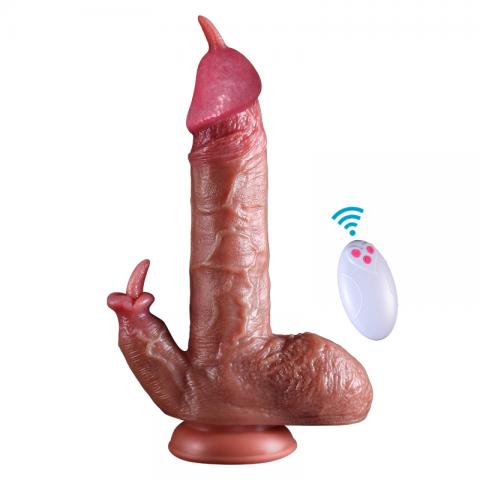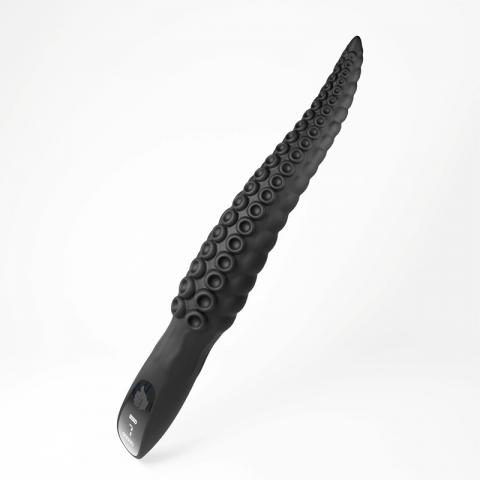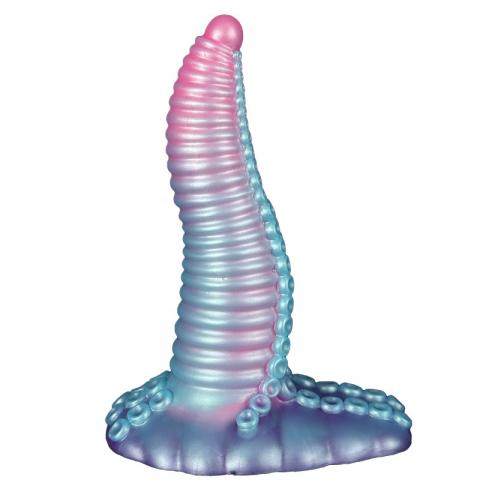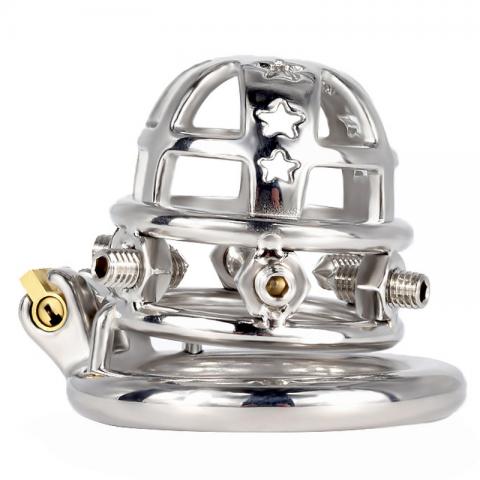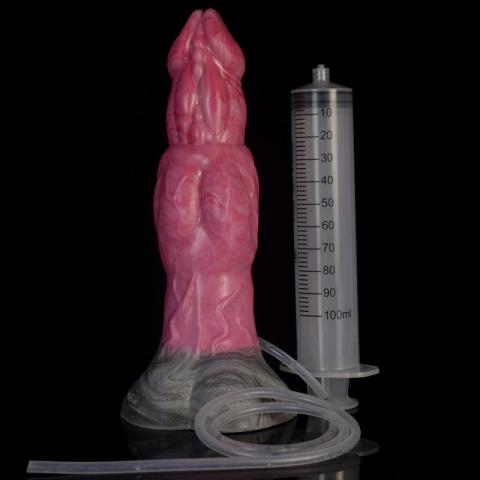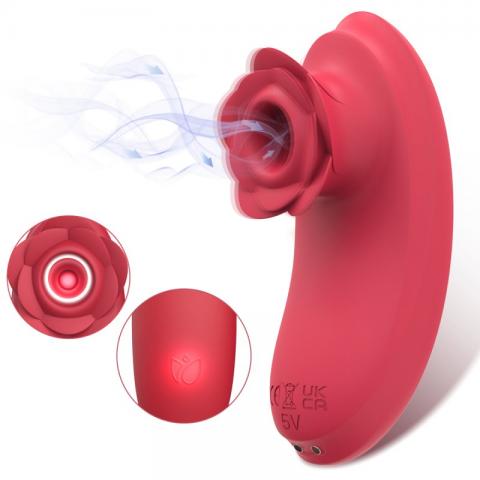Login
 USD $
USD $
 AUD AUD
AUD AUD CAD CAD
CAD CAD GBP £
GBP £ EUR €
EUR €
All Categories
(0) My Cart (0)
LambskinMushroom DildoNew ArrivalCheap
pleated filter cartridge factory
high flow filter cartridge
large flow filter cartridge
membrane pleated filter cartridge
capsule filter suppliers
capsule filter 0.2 micron
capsule filter price
capsule filter
water filter cartridge
New Products
The vagina is tighter and only needs a stroke of dysmenorrhea. Women should pay attention to their diet.
Many people ask how vaginal relaxation should be treated. First of all, it should be clear that there is no diagnostic standard for "vaginal relaxation" in clinic. To be exact, it is not a disease.
There are two reasons for vaginal relaxation, one is born with loose vagina, and the other is acquired, such as after delivery, the vagina will be looser than before delivery. There are two treatments for relaxation, and conservative treatment is commonly used, that is, exercising the pubococcyx muscle. The pubococcyx muscle is a group of muscles in the pubic part of the human body that travel backward from the lower abdomen to the top of the anus. Regular exercise of the pubococcyx muscle can promote vaginal contraction, maintain soft tissue tension and make it more elastic. Another way is surgery. However, Zhang Miao stressed to reporters that under normal circumstances, surgery is not recommended. Because with the growth of age, the vagina will become dry and inelastic, and the vagina will gradually narrow, which will aggravate the pain of sexual intercourse in women.
In fact, exercise pubococcyx muscle is very simple, only need to often contract the anus, just like suddenly hold back when urinating. This can not only tighten the vagina, but also strengthen the pelvic floor muscles, support the bladder, uterus and other organs, and prevent urinary incontinence.
There are 13 reasons that can lead to dysmenorrhea and dysmenorrhea.
Dysmenorrhea is one of the most common gynecological symptoms, which refers to the occurrence of lower abdominal pain, distension, waist acid or other discomfort before and after menstruation or during menstruation, and the symptoms seriously affect the quality of life. Dysmenorrhea is divided into primary dysmenorrhea and secondary dysmenorrhea. Primary dysmenorrhea refers to dysmenorrhea without organic lesions in reproductive organs, accounting for more than 90% of dysmenorrhea; secondary dysmenorrhea refers to dysmenorrhea caused by pelvic organic diseases.
1. Cervical canal stenosis is mainly caused by obstruction of menstrual outflow, causing dysmenorrhea.
2. Uterine dysplasia is easy to be complicated with abnormal blood supply, resulting in uterine ischemia, hypoxia and dysmenorrhea.
3. If the position of the uterus is abnormal, if the position of the woman's uterus is extremely backward or flexion, it can affect the patency of menstruation and cause dysmenorrhea.
4. some women are oversensitive to pain due to mental and neurological factors.
5. Genetic factors there is a certain relationship between dysmenorrhea in daughters and dysmenorrhea in mothers.
6. Endocrine factors: menstrual abdominal pain is related to the increase of progesterone in luteal phase.
7. The content of prostaglandin (PG) in endometrium and menstrual blood is increased. Prostaglandin E2 (PGE2) can contract uterine muscle fibers and cause dysmenorrhea. The content of prostaglandin in endometrium was significantly increased in normal women.
8. Excessive contraction of the uterus. Although the uterine contraction pressure of dysmenorrhea patients is basically the same as that of normal women (the normal pressure is about 4.9Kpa), the duration of uterine contraction is longer and it is often not easy to relax completely, so dysmenorrhea caused by excessive uterine contraction occurs.
9. Abnormal contraction of uterus. Dysmenorrhea patients often have abnormal uterine contraction, so often lead to uterine smooth muscle ischemia, uterine muscle ischemia can cause uterine muscle spasmodic contraction, resulting in pain and dysmenorrhea.
10, gynecological diseases such as endometriosis, pelvic inflammation, adenomyosis, uterine leiomyoma and so on. Placing IUD in the uterus (commonly known as IUD) is also easy to cause dysmenorrhea.
11, girls menarche, psychological pressure, sitting for a long time leads to poor blood circulation, poor operation of menstrual blood, love to eat cold drinks and food, such as dysmenorrhea.
12. Strenuous exercise during menstruation and being invaded by wind, cold, dampness, etc., are easy to cause dysmenorrhea.
13, the air is not easy to be stimulated by some industrial or chemical odors, such as gasoline, coke, etc., causing dysmenorrhea.
Diet should be avoided for patients with dysmenorrhea.
Patients with dysmenorrhea should eat.
So what can you eat to relieve dysmenorrhea? Dysmenorrhea can be relieved by supplementing foods rich in vitamin E, drinking alcohol properly and conditioning the syndrome.
1. Drink alcohol properly
Alcohol can warm yang and dredge pulse, spread qi and dissipate cold, drink some rice wine small vibrator , koji wine, wine, red wine and so on, which can activate menstruation, dilate blood vessels and relieve dysmenorrhea. For example, soak 100 grams of safflower in 400 milliliters of liquor for a week and make safflower wine. Take 10 milliliters of safflower wine every day (can add a small amount of brown sugar), which can warm the meridians and activate blood circulation. It is suitable for people with dysmenorrhea due to blood stasis.
2. Supplement foods rich in vitamin E
Vitamin E, also known as tocopherol, can maintain the normal function of reproductive organs and muscle metabolism. The foods with high content are grain germ, wheat germ, egg yolk, beans, nuts, leafy vegetables, sesame oil and so on. We should eat more of these foods appropriately.
3. Food conditioning for the certificate.
According to the different syndrome manifestations of dysmenorrhea horse cock dildo , the foods of warming, removing blood stasis and tonifying deficiency were given respectively. Cold qi stagnation, cold shape cold, should eat some cold food, such as chestnut, litchi, brown sugar, ginger, cumin, pepper, pepper and so on. People with qi stagnation and blood stasis should eat some food that can remove qi and blood stasis, such as celery, shepherd's purse, spinach, chives, coriander, hollow cabbage, ginger, carrots, oranges, orange peel, bergamot, bananas, apples and so on. For those who are weak and lack of qi and blood, they should eat some products that tonify qi, blood and kidney, such as walnut kernel, litchi, longan, jujube, mulberry, Chinese wolfberry, yam, various beans and so on.
four. Can eat more beans, fish and other high-protein foods, and increase green leafy vegetables, fruits, but also drink more water, in order to maintain defecation unobstructed, reduce pelvic congestion. Women should avoid salty foods before menstruation. Because salty food will increase the salt and water storage in the body, before menstruation, progesterone increases, prone to edema, headache and so on. The above symptoms will not occur if you start eating low-salt foods 10 days before menstruation.
Avoid food for patients with dysmenorrhea
1. Strong tea and persimmon-hinder the absorption of iron
Tea contains tannic acid, which especially likes to combine with iron ions, which greatly hinders the body's absorption of iron, which is not a good phenomenon during menstruation. The same is true of persimmons. There is no less tannic acid in persimmons than in tea.
2. Caffeinated drinks-stimulate nerves and aggravate pain
Contain caffeine, can stimulate nerves and cardiovascular system, make you nervous aggravate pain, or cause menstrual bleeding, such as coffee, cola, tea and other menstrual periods should not drink or drink less. Warm plain boiled water is the safest and most comfortable choice.
3. Carbonated drinks-affect nutritional intake and reduce body resistance
Some carbonated drinks contain phosphate, which also hinders the absorption of iron. And sodium bicarbonate will neutralize after meeting gastric juice, loss of appetite during menstruation, if affecting dietary nutrition intake, lack of resistance, dysmenorrhea will be more arrogant.
4. Beer and excessive liquor-affect the overall state of menstruation
Alcohol is incompatible with B vitamins, and the lack of B vitamins in the body will seriously affect the overall state of the body during menstruation. Wine taste sweet and warm, can disperse cold and dispel dampness, activate blood circulation and dredge menstruation, but drink less.
Is men's semen a panacea for women?
Normal men ejaculate 3-5 milliliters of semen through sexual intercourse or masturbation. Semen is grayish white, weakly alkaline, with a special fishy smell, which is mainly the stench of prostatic fluid. Seminal plasma accounts for more than 95%, and sperm accounts for less than 1%. Each cubic centimeter of testicular tissue per day can produce 2 million sperm, that is, each male testis can produce tens of millions to hundreds of millions of sperm every day. Even if these sperm are not excreted from the body, they will age, die, and eventually be digested by enzymes.
Seminal plasma is composed of Sertoli cells of convoluted seminiferous tubules, epididymis, prostate, seminal vesicle gland, urethral bulbar gland and para-urethral gland. The secretions of seminal vesicle gland and prostate account for about 65% and 30% of the total volume, respectively. Seminal plasma mainly provides the matrix for the transport and nutrition of sperm, and stimulates the motility of sperm.
Semen is composed of sperm and seminal plasma. Further analysis shows that the main component of seminal plasma is water dildo shop , which accounts for more than 90%. Other components include fat, protein particles, pigment granules, phospholipid bodies, amines (choline, spermine, spermine) and free amino acids (contents vary greatly). Within 4-6 hours after ejaculation, the total amount of amino acids in normal semen was 1.25g / 100ml), inorganic salts (calcium 25mg/dl, magnesium 14mg/dl, potassium 89mg/dl, zinc 14mg/dl), enzymes (mainly acid phosphatase, lactate dehydrogenase, hyaluronidase) and sugars (mainly fructose 224mg/100ml). These components are more or less the same as those in plasma, but their origin nice ass , existence form and function are different.
From the ingredients introduced above, semen is basically the same as plasma, so let's compare food with semen. A bowl of milk (250 ml) contains 8 grams of protein, 10 grams of fat and 13 grams of sugar. A bowl of soymilk (250 ml) contains 11 grams of protein, 5 grams of fat and 29 grams of sugar. Compared with the nutritious human body, milk and soybean milk are much more valuable than semen. In terms of function, semen is not a nutrient, but a need for reproduction.
For a long time, due to the lack of sexual knowledge education, some fallacies have been widely spread among the crowd, such as: "one drop of semen, ten drops of blood, loss of semen, great damage to vitality", believing that sperm is the essence of men, so that some people believe in falsehood as truth. In fact, semen is neither a tonic with high nutrients, nor a panacea for women's tuberculosis. Generally speaking, eating semen has no effect on the body, but the psychological effect can not be ignored.
Realistic dildo | best vibrator | pvc dildo | fat pocket pussy
There are two reasons for vaginal relaxation, one is born with loose vagina, and the other is acquired, such as after delivery, the vagina will be looser than before delivery. There are two treatments for relaxation, and conservative treatment is commonly used, that is, exercising the pubococcyx muscle. The pubococcyx muscle is a group of muscles in the pubic part of the human body that travel backward from the lower abdomen to the top of the anus. Regular exercise of the pubococcyx muscle can promote vaginal contraction, maintain soft tissue tension and make it more elastic. Another way is surgery. However, Zhang Miao stressed to reporters that under normal circumstances, surgery is not recommended. Because with the growth of age, the vagina will become dry and inelastic, and the vagina will gradually narrow, which will aggravate the pain of sexual intercourse in women.
In fact, exercise pubococcyx muscle is very simple, only need to often contract the anus, just like suddenly hold back when urinating. This can not only tighten the vagina, but also strengthen the pelvic floor muscles, support the bladder, uterus and other organs, and prevent urinary incontinence.
There are 13 reasons that can lead to dysmenorrhea and dysmenorrhea.
Dysmenorrhea is one of the most common gynecological symptoms, which refers to the occurrence of lower abdominal pain, distension, waist acid or other discomfort before and after menstruation or during menstruation, and the symptoms seriously affect the quality of life. Dysmenorrhea is divided into primary dysmenorrhea and secondary dysmenorrhea. Primary dysmenorrhea refers to dysmenorrhea without organic lesions in reproductive organs, accounting for more than 90% of dysmenorrhea; secondary dysmenorrhea refers to dysmenorrhea caused by pelvic organic diseases.
1. Cervical canal stenosis is mainly caused by obstruction of menstrual outflow, causing dysmenorrhea.
2. Uterine dysplasia is easy to be complicated with abnormal blood supply, resulting in uterine ischemia, hypoxia and dysmenorrhea.
3. If the position of the uterus is abnormal, if the position of the woman's uterus is extremely backward or flexion, it can affect the patency of menstruation and cause dysmenorrhea.
4. some women are oversensitive to pain due to mental and neurological factors.
5. Genetic factors there is a certain relationship between dysmenorrhea in daughters and dysmenorrhea in mothers.
6. Endocrine factors: menstrual abdominal pain is related to the increase of progesterone in luteal phase.
7. The content of prostaglandin (PG) in endometrium and menstrual blood is increased. Prostaglandin E2 (PGE2) can contract uterine muscle fibers and cause dysmenorrhea. The content of prostaglandin in endometrium was significantly increased in normal women.
8. Excessive contraction of the uterus. Although the uterine contraction pressure of dysmenorrhea patients is basically the same as that of normal women (the normal pressure is about 4.9Kpa), the duration of uterine contraction is longer and it is often not easy to relax completely, so dysmenorrhea caused by excessive uterine contraction occurs.
9. Abnormal contraction of uterus. Dysmenorrhea patients often have abnormal uterine contraction, so often lead to uterine smooth muscle ischemia, uterine muscle ischemia can cause uterine muscle spasmodic contraction, resulting in pain and dysmenorrhea.
10, gynecological diseases such as endometriosis, pelvic inflammation, adenomyosis, uterine leiomyoma and so on. Placing IUD in the uterus (commonly known as IUD) is also easy to cause dysmenorrhea.
11, girls menarche, psychological pressure, sitting for a long time leads to poor blood circulation, poor operation of menstrual blood, love to eat cold drinks and food, such as dysmenorrhea.
12. Strenuous exercise during menstruation and being invaded by wind, cold, dampness, etc., are easy to cause dysmenorrhea.
13, the air is not easy to be stimulated by some industrial or chemical odors, such as gasoline, coke, etc., causing dysmenorrhea.
Diet should be avoided for patients with dysmenorrhea.
Patients with dysmenorrhea should eat.
So what can you eat to relieve dysmenorrhea? Dysmenorrhea can be relieved by supplementing foods rich in vitamin E, drinking alcohol properly and conditioning the syndrome.
1. Drink alcohol properly
Alcohol can warm yang and dredge pulse, spread qi and dissipate cold, drink some rice wine small vibrator , koji wine, wine, red wine and so on, which can activate menstruation, dilate blood vessels and relieve dysmenorrhea. For example, soak 100 grams of safflower in 400 milliliters of liquor for a week and make safflower wine. Take 10 milliliters of safflower wine every day (can add a small amount of brown sugar), which can warm the meridians and activate blood circulation. It is suitable for people with dysmenorrhea due to blood stasis.
2. Supplement foods rich in vitamin E
Vitamin E, also known as tocopherol, can maintain the normal function of reproductive organs and muscle metabolism. The foods with high content are grain germ, wheat germ, egg yolk, beans, nuts, leafy vegetables, sesame oil and so on. We should eat more of these foods appropriately.
3. Food conditioning for the certificate.
According to the different syndrome manifestations of dysmenorrhea horse cock dildo , the foods of warming, removing blood stasis and tonifying deficiency were given respectively. Cold qi stagnation, cold shape cold, should eat some cold food, such as chestnut, litchi, brown sugar, ginger, cumin, pepper, pepper and so on. People with qi stagnation and blood stasis should eat some food that can remove qi and blood stasis, such as celery, shepherd's purse, spinach, chives, coriander, hollow cabbage, ginger, carrots, oranges, orange peel, bergamot, bananas, apples and so on. For those who are weak and lack of qi and blood, they should eat some products that tonify qi, blood and kidney, such as walnut kernel, litchi, longan, jujube, mulberry, Chinese wolfberry, yam, various beans and so on.
four. Can eat more beans, fish and other high-protein foods, and increase green leafy vegetables, fruits, but also drink more water, in order to maintain defecation unobstructed, reduce pelvic congestion. Women should avoid salty foods before menstruation. Because salty food will increase the salt and water storage in the body, before menstruation, progesterone increases, prone to edema, headache and so on. The above symptoms will not occur if you start eating low-salt foods 10 days before menstruation.
Avoid food for patients with dysmenorrhea
1. Strong tea and persimmon-hinder the absorption of iron
Tea contains tannic acid, which especially likes to combine with iron ions, which greatly hinders the body's absorption of iron, which is not a good phenomenon during menstruation. The same is true of persimmons. There is no less tannic acid in persimmons than in tea.
2. Caffeinated drinks-stimulate nerves and aggravate pain
Contain caffeine, can stimulate nerves and cardiovascular system, make you nervous aggravate pain, or cause menstrual bleeding, such as coffee, cola, tea and other menstrual periods should not drink or drink less. Warm plain boiled water is the safest and most comfortable choice.
3. Carbonated drinks-affect nutritional intake and reduce body resistance
Some carbonated drinks contain phosphate, which also hinders the absorption of iron. And sodium bicarbonate will neutralize after meeting gastric juice, loss of appetite during menstruation, if affecting dietary nutrition intake, lack of resistance, dysmenorrhea will be more arrogant.
4. Beer and excessive liquor-affect the overall state of menstruation
Alcohol is incompatible with B vitamins, and the lack of B vitamins in the body will seriously affect the overall state of the body during menstruation. Wine taste sweet and warm, can disperse cold and dispel dampness, activate blood circulation and dredge menstruation, but drink less.
Is men's semen a panacea for women?
Normal men ejaculate 3-5 milliliters of semen through sexual intercourse or masturbation. Semen is grayish white, weakly alkaline, with a special fishy smell, which is mainly the stench of prostatic fluid. Seminal plasma accounts for more than 95%, and sperm accounts for less than 1%. Each cubic centimeter of testicular tissue per day can produce 2 million sperm, that is, each male testis can produce tens of millions to hundreds of millions of sperm every day. Even if these sperm are not excreted from the body, they will age, die, and eventually be digested by enzymes.
Seminal plasma is composed of Sertoli cells of convoluted seminiferous tubules, epididymis, prostate, seminal vesicle gland, urethral bulbar gland and para-urethral gland. The secretions of seminal vesicle gland and prostate account for about 65% and 30% of the total volume, respectively. Seminal plasma mainly provides the matrix for the transport and nutrition of sperm, and stimulates the motility of sperm.
Semen is composed of sperm and seminal plasma. Further analysis shows that the main component of seminal plasma is water dildo shop , which accounts for more than 90%. Other components include fat, protein particles, pigment granules, phospholipid bodies, amines (choline, spermine, spermine) and free amino acids (contents vary greatly). Within 4-6 hours after ejaculation, the total amount of amino acids in normal semen was 1.25g / 100ml), inorganic salts (calcium 25mg/dl, magnesium 14mg/dl, potassium 89mg/dl, zinc 14mg/dl), enzymes (mainly acid phosphatase, lactate dehydrogenase, hyaluronidase) and sugars (mainly fructose 224mg/100ml). These components are more or less the same as those in plasma, but their origin nice ass , existence form and function are different.
From the ingredients introduced above, semen is basically the same as plasma, so let's compare food with semen. A bowl of milk (250 ml) contains 8 grams of protein, 10 grams of fat and 13 grams of sugar. A bowl of soymilk (250 ml) contains 11 grams of protein, 5 grams of fat and 29 grams of sugar. Compared with the nutritious human body, milk and soybean milk are much more valuable than semen. In terms of function, semen is not a nutrient, but a need for reproduction.
For a long time, due to the lack of sexual knowledge education, some fallacies have been widely spread among the crowd, such as: "one drop of semen, ten drops of blood, loss of semen, great damage to vitality", believing that sperm is the essence of men, so that some people believe in falsehood as truth. In fact, semen is neither a tonic with high nutrients, nor a panacea for women's tuberculosis. Generally speaking, eating semen has no effect on the body, but the psychological effect can not be ignored.
Realistic dildo | best vibrator | pvc dildo | fat pocket pussy
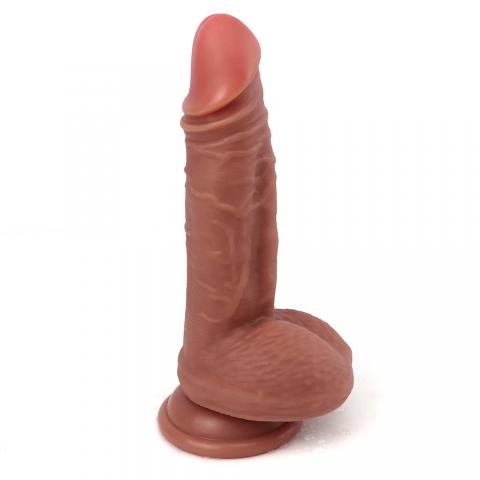
- 7.87 inch Double layer liquid silicone dildo
- $35.90
$55.69
Read More huge dildo
Subscribe for Join Us!
Subcribe to get $10 OFF for order.
- Information
- About us
- Contact us
- Customer Service
- Privacy Policy
- Return Policy
- Shopping Guide
- Payment Methods
- Products
- Dildos
- Vibrators
- Penis Pumps
- Masturbation Cup
- Love Egg
- Contact Us
- [email protected]
- Room 1003, Chevalier House, 188 Chatham Road South, Tsim Sha Tsui, Kowloon, Hong Kong
CopyRight © wlovew.com 2002-2025













-
Follow Us On WhatsApp
My Cart (0)
Follow Us On WhatsApp


